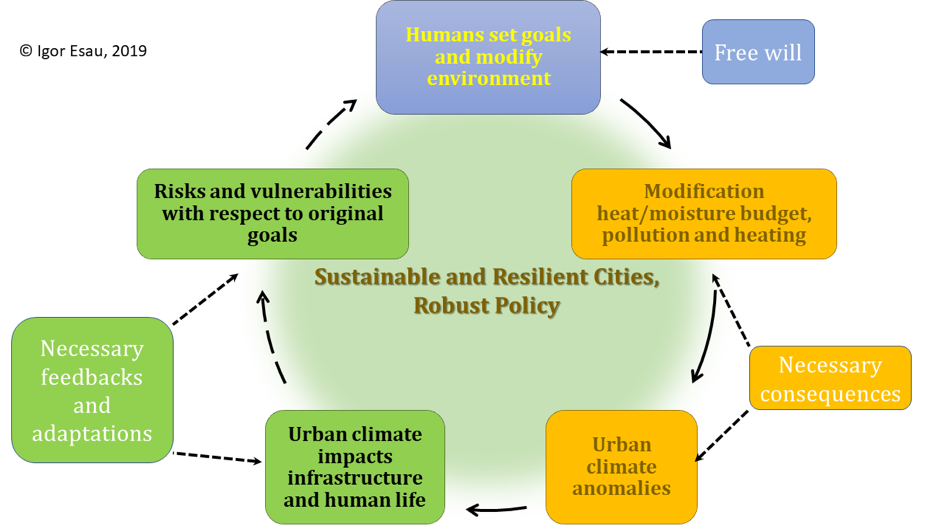Written by Igor Esau from the Bjerknes Centre and NERSC.
Urban environment is dramatically different from its natural physical background as well as urban lifestyle and economy are different from their rural counterparts. Perhaps nowhere those differences are larger than in Arctic cities. Here, small and middle-size remote cities are frozen into harsh climate and largely insolated from almost permanent winter as much as their migrant dwellers are insulated from pastoral nomadic economy of indigenous people.
This study attempts to connect anthropogenic climate anomalies and broader environmental impact of the Arctic cities with socio-economical decisions and policy governing the city growth and decay.
Although there is a growing body of research on Arctic urbanization, few studies focus on the long-term interaction of urban environments with the natural world and society. As the search for determinative links between natural environmental characteristics and socio-cultural phenomena is exceedingly complex and obscured by human decision-making, it is more fruitful to adopt another perspective – one that views the city as an anthropogenic object combining natural, social, and cultural features and phenomena.
The HIARC (Anthropogenic Heat Islands in the Arctic – Windows to the Future of the Regional Climates, Ecosystems and Society) project helps to fill this knowledge gap by bringing together traditional climate science that operates on large spatial and time scales; micro-level high-resolution studies that provide relevant practical details about the changing environment; bio-medical science that studies the physical adaptation of newcomers to the Arctic environment; and an array of social science approaches that range from political science on urban regimes to sociology and cultural anthropology that capture evolving human environments.
This article offers a preliminary agenda for thinking about cities as an anthropogenic object in a polar context.

Reference
Laruelle M., I. Esau, M. Miles, V. Miles, A.N. Kurchatova, S.A. Petrov, A. Soromotin, M. Varentsov, P. Konstantinov, 2019: Arctic cities as an anthropogenic object: A preliminary approach through urban heat islands, Polar Journal,

